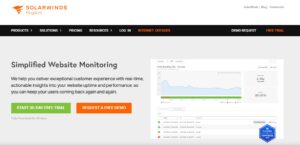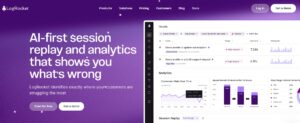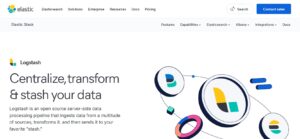Logit.io has carved a niche as a cost-effective, open-source-based observability platform, leveraging tools like OpenSearch, Jaeger, and Grafana to deliver centralized log management, metrics monitoring, and distributed tracing.
With fully managed ELK hosting and its support for OpenTelemetry (OTel), Logit.io appeals to businesses seeking affordable, scalable solutions for monitoring hybrid-cloud environments. However, despite its strengths, users often explore Logit.io alternatives due to specific limitations, such as the lack of explicit synthetic monitoring, limited advanced real user monitoring (RUM) features, and a primary focus on cloud-based deployments.
CubeAPM stands out as the premier alternative to Logit.io, offering a unified, OpenTelemetry-native platform that combines APM, log management, and infrastructure monitoring with zero vendor lock-in. Its intuitive interface, smart, and cost-effective pricing of $0.15/GB make it ideal for teams seeking scalability and performance without complexity.
In this article, we’ll explore the top 8 Logit.io alternatives—comparing features, pricing, support, and use cases. Whether you’re looking for better OpenTelemetry support, lower costs, or faster support, this guide will help you find the right fit.
Table of Contents
ToggleTop 8 Logit.io Alternatives
- CubeAPM
- Elastic Observability
- Dynatrace
- Datadog
- New Relic
- Splunk AppDynamics
- Sumo Logic
- Better Stack
Why Look for Logit.io Alternatives?
Despite its strengths in cost-effective, open-source observability, many teams are moving away from Logit.io due to growing concerns around feature limitations, usability, deployment flexibility, and support. Here are the top five issues commonly cited in observability tool discussions on platforms like Reddit, G2, and SourceForge:
1. Lack of Synthetic Monitoring and Advanced RUM
Logit.io delivers robust logs, metrics, and traces but lacks explicit synthetic monitoring and advanced real user monitoring (RUM). Unlike Datadog or CubeAPM, which offer synthetic testing to simulate user interactions and detailed RUM for user journey analytics, Logit.io’s focus on core observability forces teams to adopt separate tools. This fragments workflows and increases costs for engineers needing proactive performance testing or deep end-user insights.
2. Cloud-Only Model Limits Self-Hosting Flexibility
Logit.io’s cloud-based PaaS model, built on hosted OpenSearch, Jaeger, and Grafana, offers minimal self-hosted or on-premises options. This restricts organizations needing data localization for GDPR, HIPAA, or regional sovereignty compliance. Alternatives like cUBEapm provide self-hosted deployments via Docker or Helm, ensuring data control. Reddit discussions on observability tools often criticize cloud-only platforms for vendor lock-in and egress fees, pushing users to more flexible solutions.
3. Steep Learning Curve and Sparse Documentation
Leveraging open-source tools like OpenSearch and OpenTelemetry, Logit.io poses a steep learning curve for teams without ELK Stack expertise. Users report challenges with tasks like custom Logstash filter setup, worsened by documentation lacking depth for advanced use cases. Frustration with setup complexity, forces engineers to lean on support or external resources.
4. Support and Pricing Transparency Concerns
Logit.io provides 24/7 support and dedicated account managers for Enterprise plans, but lower-tier users report inconsistent response times and limited access to senior engineers. While pricing starts at $9/month (with a free trial) for Development plan and $160/month for Business plan for logs, scaling costs for high data volumes lack transparency, requiring sales quotes.
5. Limited Advanced AI-Driven Analytics
Logit.io relies on open-source tools for analytics but lacks the advanced AI-driven features found in competitors like Logz.io or Dynatrace, which offer automated anomaly detection, predictive analytics, and log clustering. Users seeking intelligent insights to proactively identify issues or optimize performance may find Logit.io’s analytics basic, requiring manual effort or additional tools. Discussions on platforms like G2 highlight the growing demand for AI-powered observability, pushing teams toward more sophisticated alternatives.
6. Potential Performance Constraints at Scale
While Logit.io scales well for small to mid-sized deployments, some users report performance constraints when handling high-cardinality data or massive log volumes in complex environments like large Kubernetes clusters. Competitors like Splunk or Sumo Logic, built for enterprise-scale workloads, offer more robust performance. Slowdowns in query performance for high-volume setups, promps teams to seek alternatives optimized for scale.
Criteria for Suggesting Logit.io Alternatives
To recommend viable Logit.io alternatives, we evaluated tools based on the following criteria, ensuring alignment with diverse organizational needs and addressing Logit.io’s key limitations:
1. Native OTEL Support
Alternatives must provide native OpenTelemetry (OTel) support to ensure standardized, vendor-neutral collection of telemetry data (metrics, logs, traces). Native OTel integration enables seamless instrumentation, avoids proprietary lock-in, and supports modern cloud-native environments like Kubernetes. Unlike Logit.io, which integrates OTel but may require additional configuration for advanced use cases, top alternatives should offer out-of-the-box OTel compatibility for streamlined setup and future-proof observability.
2. Full MELT Stack Coverage (Metrics, Events, Logs, Traces)
An alternative should offer deep observability across the stack—not just infrastructure monitoring. This includes logs with search, traces with latency insights, infrastructure metrics, and event-driven alerting.
3. Smart Sampling & Cost Optimization
Tools like CubeAPM use intelligent tail-based sampling to retain rare and anomalous traces while reducing noise and cost. In contrast, legacy tools like SolarWinds and Datadog often rely on probabilistic sampling that either floods storage or misses critical data.
3. Comprehensive Feature Coverage
Alternatives should deliver robust APM, log management, metrics, and tracing, with added support for synthetic monitoring and real user monitoring (RUM) to address Logit.io’s gaps. Integration with popular observability stacks (e.g., Prometheus, Grafana) and advanced features like AI-driven analytics are critical for holistic monitoring and proactive issue resolution.
4. Cost Efficiency and Transparency
Pricing must be competitive, transparent, and flexible to accommodate varying data volumes and retention periods. Alternatives should minimize hidden costs, such as egress fees or custom metric charges, which can inflate budgets. Logit.io’s $0.74 per GB per day for logs is cost-effective, but alternatives should offer clearer pricing for scaling or high-cardinality data.
5. Deployment Flexibility
Options should include cloud-based, self-hosted, or hybrid deployments to meet data localization and compliance requirements (e.g., GDPR, HIPAA, SOC 2). Unlike Logit.io’s cloud-centric model, alternatives like SigNoz with self-hosting capabilities are essential for organizations prioritizing data sovereignty or on-premises control.
6. Scalability and Performance
Tools must handle high-cardinality data and large-scale environments (e.g., microservices, Kubernetes clusters) without performance degradation or cost spikes. Logit.io’s performance can falter at high volumes, so alternatives should offer robust query performance and efficient data processing for enterprise-grade workloads.
7. Support and Ease of Use
Robust support channels (e.g., live chat, dedicated account managers) and intuitive interfaces are vital for quick onboarding and issue resolution. Logit.io’s steep learning curve and inconsistent support for lower-tier plans highlight the need for alternatives with user-friendly setups and responsive, accessible support, even for smaller teams.
Logit.io Overview
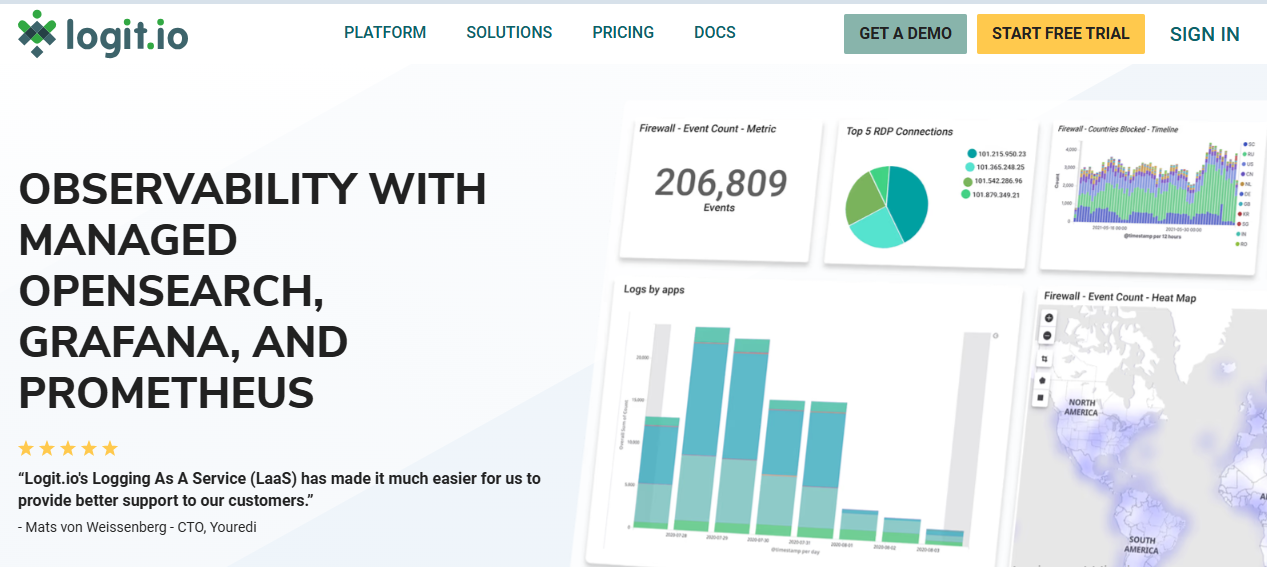
Known for:
Logit.io is recognized for providing a fully managed, open-source observability platform that integrates logging, metrics, traces, and security monitoring. It leverages technologies like OpenSearch (formerly ELK), Prometheus, Grafana, and Jaeger to offer scalable and compliant observability solutions.
Standout Features:
- Open-Source Stack: Utilizes industry-standard open-source tools, ensuring flexibility and avoiding vendor lock-in.
- Full-Stack Observability: Offers comprehensive monitoring across logs, metrics, and traces, providing a unified view of system health.
- Security & Compliance: Adheres to ISO 27001, HIPAA, PCI, and GDPR standards, ensuring data security and privacy.
- OpenTelemetry Integration: Supports native integration with OpenTelemetry, facilitating seamless data collection and analysis.
Key Features:
- Managed OpenSearch (ELK Stack): Centralizes and analyzes logs from various sources, enabling real-time insights and troubleshooting.
- Metrics Monitoring with Prometheus & Grafana: Monitors system performance metrics, providing visualizations and alerts for proactive issue resolution.
- Application Performance Monitoring (APM): Diagnoses and optimizes application performance, identifying bottlenecks and improving user experience.
- Security Information and Event Management (SIEM): Monitors and analyzes security events, aiding in compliance and threat detection.
- OpenTelemetry Support: Facilitates the collection and analysis of telemetry data, enhancing observability across services.
Pros:
- Cost-Effective, offers competitive pricing,
- Accommodates growing data needs without compromising performance or reliability.
- Provides an intuitive dashboard for easy navigation and monitoring.
- Receives positive feedback for responsive and helpful customer service.
Cons:
- Alerting Delays: Some users have reported delays in alert notifications, particularly for CPU and memory metrics.
- Learning Curve: New users may experience a learning curve when setting up and configuring the platform.
- Lacks Synthetic Monitoring: Does not provide built-in synthetic monitoring for uptime or performance testing.
- Limited Real User Monitoring (RUM): Lacks native support for real-user monitoring of frontend performance.
- No Native APM Support for Mobile Apps: Does not offer specific tools for monitoring mobile app performance.
Best for:
- Small to Medium Enterprises (SMEs): Organizations seeking a cost-effective and scalable observability solution.
- DevOps Teams: Teams requiring comprehensive monitoring across logs, metrics, and traces.
- Security-Conscious Organizations: Businesses needing to adhere to strict compliance and security standards.Logit.io
Pricing & Customer Reviews:
- Pricing: Logit.io offers flexible pricing models:
- Logs: starts at $9/month for development and $160 per month for business
- Metrics: starts at $5/month for development and $120/month for business
- APM starts at $4/month for development and $80/month for business
- Rating: 3.5/5(G2)
Top 8 Logit.io Alternatives
1. CubeAPM

Known for:
CubeAPM is a full-stack, OpenTelemetry-native Application Performance Management (APM) platform designed to provide cost-efficient, compliance-ready hosting with fast ingestion speeds. It’s perfect for DevOps and Site Reliability Engineering (SRE) teams who need reliable observability without breaking the bank or sacrificing control.
Standout Features:
- Smart Sampling Engine
Unlike legacy tools, CubeAPM uses Smart Sampling to intelligently filter and retain only the most critical traces, reducing volume by up to 70% and lowering storage and compute costs.
- Full MELT Support
Native support for Metrics, Events, Logs, and Traces, alongside Real User Monitoring (RUM), synthetics, and error tracking—all on one unified platform.
- Compliance-Ready
CubeAPM can be deployed both on-premise or in the cloud, ensuring compliance with data residency laws like GDPR and India’s DPDP.
- 1-Hour Setup & Agent Compatibility
Drop-in agent compatibility with Datadog, Prometheus, OpenTelemetry, and New Relic, making migration seamless with pre-built dashboards and auto-instrumentation.
Key Features:
- Full MELT Support: Native integration of Metrics, Events, Logs, and Traces, alongside RUM and synthetics.
- Smart Sampling: Intelligent trace filtering that reduces noise and optimizes cost.
- Compliance-Ready Hosting: Ensures local data processing for compliance with international regulations.
- Seamless Migration: Works out-of-the-box with agents from Datadog, New Relic, and OpenTelemetry, easing setup.
Pros:
- Full-stack observability with OpenTelemetry-native ingestion.
- Huge integration ecosystem, with 800+ integrations
- Transparent, flat-rate pricing. Zero cloud egress costs
- 2-4x faster ingestion performance.
- Ideal for data localization and compliance-driven environments.
- Supports popular platforms like AWS, Kubernetes, and Redis.
Cons:
- Not suitable for teams looking for off-prem solutions.
- Strictly an observability platform; doesn’t handle cloud security management.
Best for:
- Engineering teams seeking cost-effective control over telemetry data.
- Startups and mid-sized teams scaling fast while managing budgets.
Pricing & Customer Reviews:
- Pricing: $0.15/GB flat ingestion rate, with zero cloud egress costs
- Rating: 4.7/5 (based on pilot programs, Slack feedback, and demos).
- Praised for: Developer-friendly UX, transparent pricing, and powerful trace sampling.
- Criticized for: Growing ecosystem with fewer marketplace plugins compared to Datadog.
CubeAPM vs Logit.io:
CubeAPM offers a more flexible, cost-efficient solution with Smart Sampling, full MELT support, and data localization options, positioning it as a more production-ready platform compared to Logit.io’s focus on open-source-based logging and monitoring. While Logit.io emphasizes open-source transparency, CubeAPM gives more granular control over trace sampling, making it a better choice for teams with compliance and cost-control needs.
2. Elastic Observability
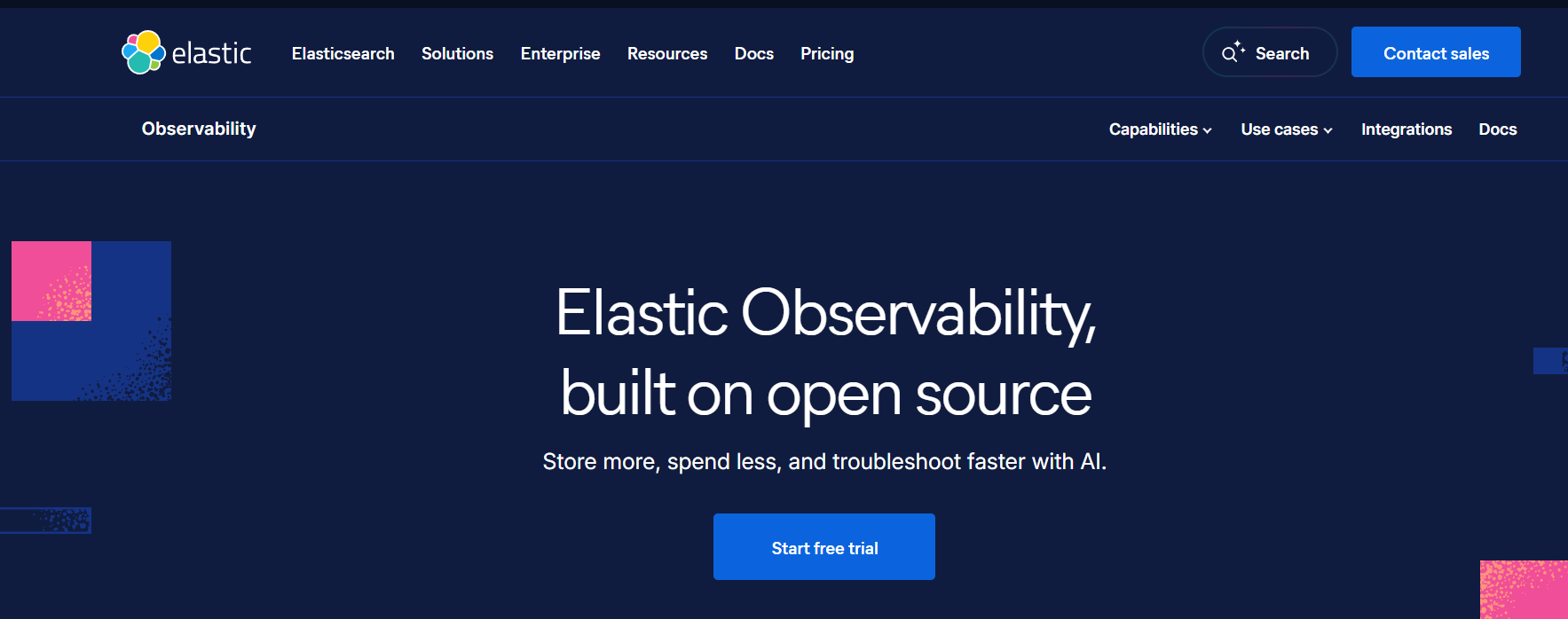
Known For:
Elastic Observability is known for its robust log analytics and centralized monitoring capabilities, built on the popular ELK Stack (Elasticsearch, Logstash, Kibana). It excels in environments dealing with large volumes of machine data—especially logs and metrics—across distributed systems. Elastic Observability offers in-depth insights into telemetry data, with advanced querying and visualization features.
Standout Features:
- Sampling: Elastic Observability uses tail-based sampling with ingest filters (e.g., trace duration, error status), optimizing storage by keeping only high-value traces.
- Kibana Dashboards: Leverages Kibana to provide powerful, customizable visualizations for logs, metrics, and traces, making monitoring complex systems easier.
- Elasticsearch Query Language (KQL): KQL allows for complex, full-text search and filtering across large datasets, enabling fast analysis of massive telemetry volumes.
- Elastic Common Schema (ECS): ECS normalizes data from multiple sources, streamlining the analysis of diverse telemetry data in a standardized format.
- Index Lifecycle Management (ILM): Manages data retention by tiering data into hot, warm, or cold phases based on its importance and age, helping optimize storage costs.
Key Features:
- Centralized Log Management: Efficiently ingests, indexes, and queries logs from various sources.
- Metrics Monitoring: Monitors time-series metrics from infrastructure, services, and containers.
- Elastic APM: Offers distributed tracing with service maps and latency breakdowns for backend services.
- Uptime Monitoring: Provides basic synthetic checks to monitor service availability.
- Basic RUM Support: Includes JavaScript agents for browser monitoring, but with limited depth compared to other tools.
- Alerting and Anomaly Detection: Offers threshold-based and machine-learning-driven alerting for metrics and logs.
Pros:
- Highly scalable, capable of handling massive volumes of logs and metrics.
- Built on open-source ELK stack components, which are widely adopted and flexible.
- Powerful search and query capabilities that allow quick analysis even on large datasets.
- Kibana provides customizable dashboards and visual tools for deeper monitoring insights.
Cons:
- Steep learning curve: Requires familiarity with Elasticsearch, KQL, and Kibana to set up effective observability workflows.
- Frequent maintenance: Needs ongoing tuning for shards, indices, retention, and storage tiers.
- Limited OpenTelemetry support: Requires manual setup and lacks auto-instrumentation, making integration more complex.
- Partial MELT coverage: Lacks strong support for RUM, synthetic monitoring, and unified error tracking.
- Pricing complexity: Resource-based pricing in Elastic Cloud can lead to unpredictable billing.
- No on-premise support in Elastic Cloud, limiting deployment flexibility for certain use cases.
Best For:
- Large enterprises with significant Elasticsearch expertise or those prioritizing log analytics over full-stack observability.
- Teams already invested in the Elastic ecosystem, capable of dedicating engineers to manage and tune the platform.
- Organizations looking for powerful log analytics and querying capabilities rather than a comprehensive observability solution.
Pricing & Customer Reviews:
- Pricing: Elastic Cloud pricing varies based on compute units, storage, ingestion rates, and retention, making it difficult to predict costs.
- Rating: 4.2/5 on G2.
- Praised for: Strong logging and analytics, customizable dashboards, and a rich query engine.
- Criticized for: Complexity of use, pricing unpredictability, and limited support for modern observability needs.
Elastic Observability vs Logit.io:
Elastic Observability excels in log analytics and complex querying, especially for teams familiar with the ELK stack. However, it requires a steep learning curve and ongoing maintenance. Additionally, it has limited OpenTelemetry support and lacks strong support for synthetics or RUM. Logit.io, on the other hand, offers a more user-friendly, cost-effective solution with full-stack observability and open-source flexibility, making it a better option for teams seeking simple, transparent pricing and comprehensive telemetry coverage.
3. Dynatrace
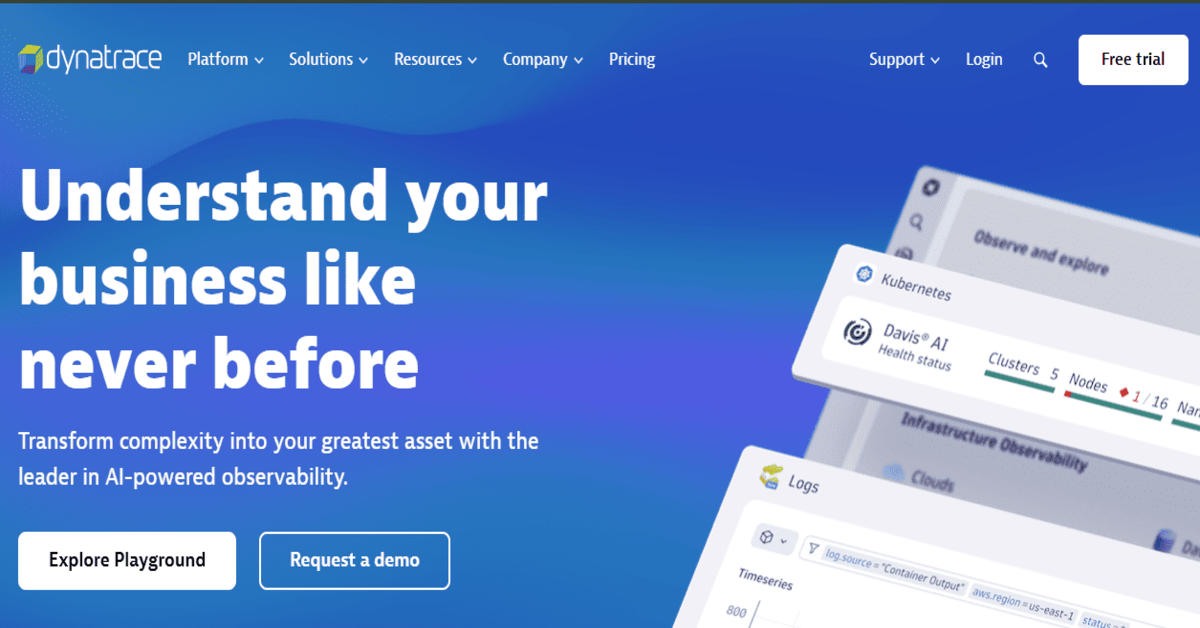
Known for:
Dynatrace is an AI-powered enterprise observability platform with robust infrastructure monitoring, real-time analytics, and application security. Known for its full-stack automation and its Davis AI engine, Dynatrace excels in environments with complex microservices and cloud-native workloads.
Standout Features:
- Davis AI Engine: Detects anomalies, reduces alert fatigue, and auto-discovers root causes across dynamic environments.
- OneAgent Deployment: Auto-discovers services and dependencies across containers, hosts, and serverless environments.
- Security + Observability: Combines observability with runtime application protection (RASP) and vulnerability analytics.
- Cloud Automation: Intelligent integrations with AWS, Azure, and Kubernetes for workload placement and auto-scaling recommendations.
Key Features:
- AI-Driven Root Cause Analysis: Automated root cause detection powered by the Davis AI engine.
- OneAgent Deployment: Simplifies deployment across a variety of infrastructures.
- Comprehensive Observability: Provides visibility across infrastructure, applications, and security.
- Cloud Automation: Seamless integrations for efficient cloud management.
Pros:
- Enterprise-grade scalability and resilience.
- No sampling; captures 100% of transactions.
- Strong AI-backed analytics and auto-baselining.
- Complete visibility across infrastructure, applications, users, and cloud.
Cons:
- Expensive with complex pricing models.
- Steep learning curve for new users.
- Potentially over-engineered for teams not utilizing all advanced features.
- Vendor lock-in due to proprietary agents.
Best for:
- Large enterprises with high observability maturity.
- Teams managing massive multi-cloud microservices.
- Enterprises seeking a combined observability and security platform.
Pricing & Customer Reviews:
- Pricing: $0.08/hour per 8 GiB host (~$57.60/host/month).
- Rating: 4.5/5 on G2.
- Praised for: Automation, AI capabilities, and end-to-end visibility.
- Criticized for: High cost and complexity.
Dynatrace vs Logit.io:
Dynatrace’s enterprise-grade capabilities, powered by AI, offer unparalleled performance in large-scale, multi-cloud environments, unlike Logit.io, which is more lightweight and suited for teams looking for cost-effective, open-source observability. While Dynatrace excels at deep integrations and AI-driven insights, Logit.io focuses on transparency and flexibility, making it more suitable for smaller teams with specific observability needs.
4. Datadog

Known For:
Datadog is a leading cloud-native observability platform known for its robust monitoring and analytics capabilities. It provides comprehensive coverage across metrics, logs, traces, and synthetic monitoring, making it a popular choice for DevOps and IT teams managing large-scale infrastructures and microservices.
Standout Features:
- Unified Observability: Datadog integrates logs, metrics, traces, and synthetics, offering end-to-end visibility into infrastructure, applications, and user experiences.
- AI-Driven Insights: Uses machine learning to automatically detect anomalies, forecast trends, and correlate data across various sources.
- Synthetic Monitoring: Offers synthetic tests to monitor application performance, ensuring uptime and availability from the user’s perspective.
- Distributed Tracing: Supports detailed distributed tracing with service maps, latency breakdowns, and detailed diagnostics for microservices architectures.
- Integration Ecosystem: Datadog integrates with thousands of technologies, making it highly adaptable to various environments.
Key Features:
- Full-Stack Monitoring: Combines infrastructure, application, and network monitoring with real-time logs and traces.
- Synthetic Monitoring: Offers automated browser-based tests to simulate real user behavior and monitor performance.
- Real-Time Dashboards: Interactive dashboards that offer real-time data visualizations for metrics, logs, and traces.
- Cloud Security: Includes capabilities for monitoring cloud security configurations and vulnerabilities, providing full observability across cloud-native environments.
- AI-Powered Alerts: Uses machine learning to reduce alert fatigue by detecting anomalies and providing actionable insights.
Pros:
- End-to-End Observability: Comprehensive monitoring across infrastructure, applications, logs, and user experiences.
- Strong Integrations: Works seamlessly with over 450 technologies and services, including AWS, Azure, Kubernetes, and Docker.
- Automatic Instrumentation: Offers native and auto-instrumentation support for popular programming languages (e.g., Java, Node.js, Python).
- Powerful Dashboards: Customizable, interactive dashboards that provide deep insights into system performance.
- Security Features: Includes cloud security monitoring and integrations for vulnerability scanning and configuration management.
Cons:
- Expensive at Scale: Pricing is usage-based, which can result in high costs for large teams or high data volumes.
- Learning Curve: The platform is feature-rich, and it can take time to understand and set up effectively.
- Complex Pricing: Datadog’s pricing model is complex and can become unpredictable as data volumes grow.
- Limited Data Control: As a SaaS-based platform, Datadog does not offer much control over where your data is stored.
Best For:
- Large enterprises or organizations with complex, distributed systems and a need for comprehensive observability.
- DevOps and SRE teams that need high-end monitoring, anomaly detection, and performance troubleshooting at scale.
- Security-conscious organizations requiring integrated security and observability features.
Pricing & Customer Reviews:
- Pricing: Starts with a free tier for basic monitoring, with paid plans starting at $15 per host per month for infrastructure monitoring. Pricing scales with the number of hosts, metrics, and users.
- Rating: 4.5/5 on G2.
- Praised for: Easy setup, comprehensive coverage, wide integrations, and advanced AI-driven insights.
- Criticized for: High costs at scale, complex pricing, and limited flexibility for smaller teams.
Datadog vs Logit.io:
Datadog is a comprehensive observability platform that excels at providing end-to-end visibility, particularly for large enterprises with complex infrastructures and microservices. However, its usage-based pricing can become expensive at scale, and its extensive feature set may come with a steep learning curve. On the other hand, Logit.io provides a cost-effective, flat-rate pricing model with a focus on flexibility and open-source tools. Logit.io offers comprehensive observability without the financial sprawl, making it an excellent option for smaller teams or those seeking predictable pricing.
5. New Relic

Known for:
New Relic is a full-stack observability platform with an all-in-one approach to telemetry collection, analysis, and visualization. It is well known for its unified UI, instrumentation libraries, and usage-based pricing model, which offers great visibility but can become costly at scale.
Standout Features:
- Unified Telemetry Platform: Integrates metrics, events, logs, and traces into a single platform called New Relic One, simplifying observability for users.
- Auto Instrumentation: Provides native agents and auto-instrumentation support for popular languages (Java, Node.js, Python, Ruby), making setup easy.
- Distributed Tracing & Service Maps: Offers detailed distributed tracing and visual service maps to help debug latency and dependency issues.
- Head-Based Sampling: Uses predefined sampling rates (e.g., 1%, 5%) but may miss important traces if not manually adjusted.
Key Features:
- All-in-One Telemetry Platform: Combines metrics, logs, events, and traces in one unified UI.
- Real-Time Dashboards & Alerts: Provides real-time monitoring, error tracking, and diagnostics at the code level.
- AI-Powered Anomaly Detection: Detects anomalies in system performance with the help of AI assistance.
- OpenTelemetry Support: Offers limited OTEL integration but requires extra configuration.
Pros:
- Easy onboarding with pre-built integrations.
- Comprehensive visibility from backend to frontend.
- Strong documentation and a robust support ecosystem.
- Excellent real-time error tracking and monitoring capabilities.
Cons:
- Expensive, especially at scale, due to its usage-based pricing model.
- Fixed sampling rates can result in missed traces.
- Advanced features are gated behind usage or enterprise tiers.
- Limited control over data storage (no self-hosting options).
Best for:
- Mid-to-large teams requiring fast setup and full-stack visibility.
- Companies with multi-language microservices and SRE workflows.
- Teams that are comfortable with SaaS-only solutions and don’t need on-prem hosting.
Pricing & Customer Reviews:
- Pricing: Free tier with 100 GB/month of data ingestion; Paid plans start at $0.35/GB + $400/user/month for full access.
- Rating: 4.4/5 on G2.
- Praised for: Out-of-the-box user experience, wide language support, powerful UI.
- Criticized for: Pricing complexity, sampling limitations, and limited data control.
New Relic vs Logit.io:
New Relic offers a more mature, feature-rich platform for full-stack observability, especially suited for larger teams with multi-language microservices. However, Logit.io stands out with its cost-predictable flat-rate pricing and self-hosting options, which make it a more suitable alternative for teams looking for affordable, open-source-based observability without surprise billing.
6. Splunk AppDynamics

Known for:
Splunk AppDynamics, originally developed by AppDynamics and later acquired by Cisco, is an APM platform designed for large enterprises. It is well-known for its business transaction monitoring, deep code-level diagnostics, and performance analysis, especially in industries like banking, telecom, and insurance.
Standout Features:
- Business Transaction Monitoring: Observability is centered around business transactions, making it easier to align engineering and business teams on service health.
- Code-Level Diagnostics: Provides detailed stack traces, database call visibility, and execution timing, making it ideal for debugging backend performance issues.
- AI-Powered Root Cause Analysis: Uses machine learning to detect performance anomalies and identify root causes.
- Hybrid Deployment Options: Available in SaaS, self-hosted, or hybrid modes, making it ideal for enterprises with strict data residency or air-gapped requirements.
Key Features:
- Business Transaction Monitoring: Focuses on transactions that are critical to business processes.
- Code-Level Diagnostics: Provides granular visibility into stack traces and performance down to the line of code.
- AI-Powered Root Cause Detection: Automates the identification of root causes of performance issues across application layers.
- Flexible Deployment Options: Supports SaaS, on-premise, and hybrid deployments for flexibility.
Pros:
- Enterprise-ready with strong SLAs and compliance certifications.
- Detailed stack and database visibility.
- Mature ecosystem of integrations and agent coverage.
- Flexible deployment options (on-prem, hybrid, SaaS).
Cons:
- Expensive and modular pricing, especially for APM units.
- UI and dashboards feel dated compared to more modern, cloud-native tools.
- Limited OpenTelemetry support; requires connectors.
- High data volumes can lead to increased costs.
Best for:
- Large enterprises with complex infrastructures or compliance constraints.
- Teams that need detailed business transaction-level monitoring.
- Organizations that prioritize performance diagnostics over full-stack observability.
Pricing & Customer Reviews:
- Pricing: Starts at $75/host/month, billed annually.
- Rating: 4.3/5 on G2.
- Praised for: Deep diagnostics, flexible deployment, business alignment.
- Criticized for: High cost, aging UI, and complex setup.
Splunk AppDynamics vs Logit.io:
Splunk AppDynamics is well-suited for large enterprises requiring in-depth business transaction monitoring and code-level diagnostics. In contrast, Logit.io offers a more cost-effective, open-source-based solution for teams prioritizing full-stack observability with more transparent pricing and self-hosting flexibility, making it a better option for smaller teams and those looking to scale cost-effectively.
7. Sumo Logic
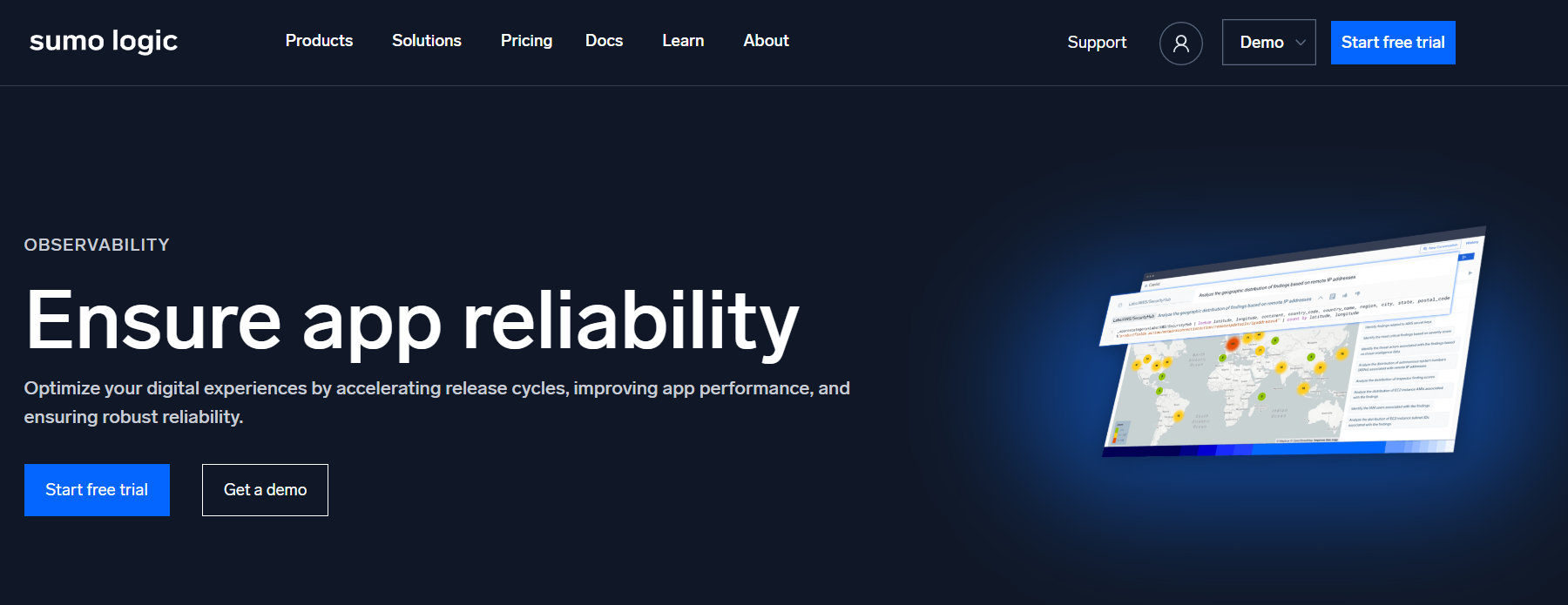
Known for:
Sumo Logic is a cloud-native log management and SIEM platform designed for security-conscious organizations. It integrates log management, metrics, and security analytics, enabling scalable log ingestion and elastic compute without requiring infrastructure management.
Standout Features:
- Unified Log and Metrics Platform: Combines logs, metrics, and security analytics into a single platform, offering seamless visibility for DevSecOps teams.
- Cloud-Native Architecture: Fully SaaS-based, with multi-cloud support for AWS, Azure, and GCP.
- Security & Compliance Analytics: Includes compliance templates and threat detection for standards like PCI, HIPAA, and SOC2.
- Flexible Query Language: Uses its proprietary query language (LogReduce) for customizable monitoring.
Key Features:
- Unified Log and Metrics Platform: Consolidates logs, metrics, and security analytics into one dashboard.
- Cloud-Native Architecture: Supports high-scale data ingestion with multi-cloud flexibility.
- Security and Compliance: Built-in threat detection and compliance templates.
- Real-Time Dashboards: Provides live query capabilities and customizable monitoring dashboards.
Pros:
- No infrastructure management overhead.
- Deep log analytics and flexible querying.
- Strong integration with Kubernetes and AWS.
- Scalable, cloud-native platform with multi-cloud support.
Cons:
- High costs at scale due to tiered data plans.
- Proprietary query language adds a learning curve.
- Limited support for full MELT (Metrics, Events, Logs, Traces) coverage.
Best for:
- Enterprises needing combined SIEM and observability in a single solution.
- Teams with log-heavy observability needs.
- Organizations with a cloud-first architecture.
Pricing & Customer Reviews:
- Pricing: Estimated at $3.14 per TB scanned, typically $3,000–$8,000/month for medium-scale observability.
- Rating: 4.2/5 on G2.
- Praised for: Prebuilt dashboards, log depth, security integrations.
- Criticized for: High cost and steep learning curve.
Sumo Logic vs Logit.io:
Sumo Logic offers a more comprehensive SIEM and log management platform, with a focus on security alongside observability. However, Logit.io excels in full-stack observability with cost-effective, open-source-based solutions that avoid the high costs associated with Sumo Logic, especially for teams seeking affordable scalability without compromising on transparency.
8. Better Stack
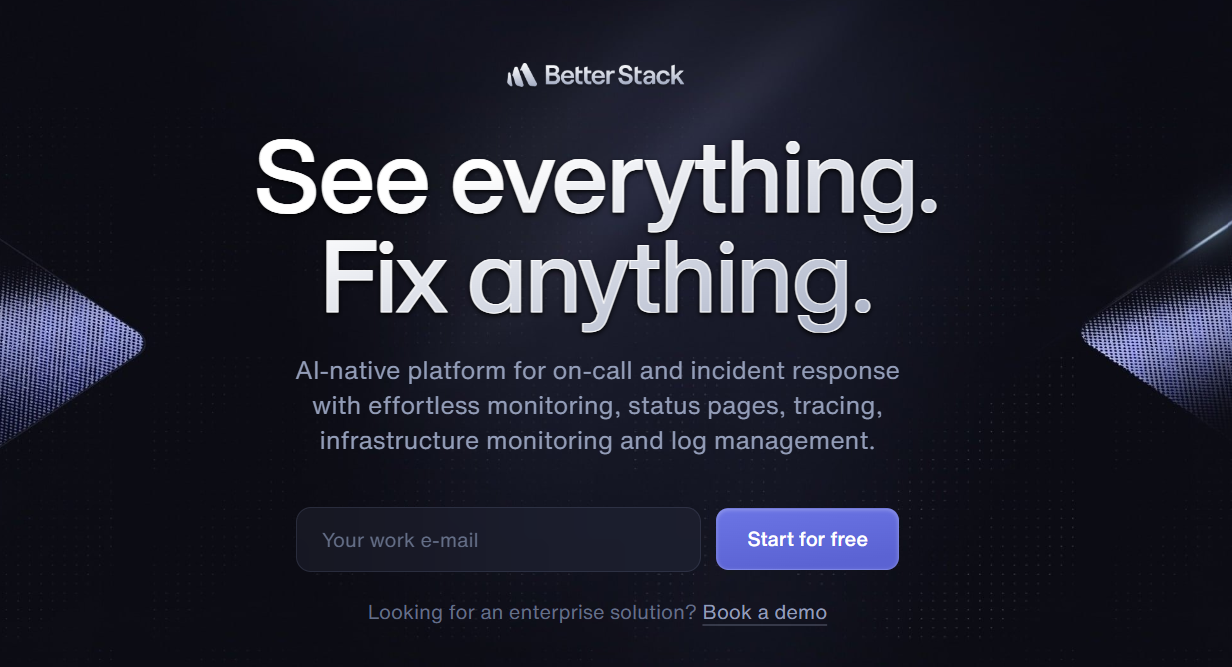
Known for:
Better Stack is a modern observability platform designed for startups and small teams, with a focus on log management and uptime monitoring. It is known for its clean, intuitive UI and quick setup process, ideal for teams needing essential observability without the complexity of full-stack APM tools.
Standout Features:
- Logtail: A powerful log management solution built on ClickHouse, providing fast and storage-efficient log processing.
- Better Uptime: Combines uptime monitoring with incident management and status pages, making it perfect for SRE teams.
- Simplicity and Speed: Easy setup and minimal configuration required for small teams.
- Logs-Only Focus: Currently focuses only on log management, lacking support for tracing or metrics.
Key Features:
- Logtail: Centralized log management with SQL-style query capabilities and real-time log tailing.
- Better Uptime: Synthetic monitoring and incident alerts, with status pages.
- Simple Alerts: Integrates with Slack and email for clean, minimalistic alerting workflows.
- SaaS-Only: A fully cloud-based solution with no infrastructure management.
Pros:
- Extremely fast setup with minimal complexity.
- Clean, user-friendly interface designed for developers.
- Affordable pricing for small teams and startups.
- Best for uptime and incident visibility.
Cons:
- Lacks full-stack observability (no tracing or metrics).
- Not OpenTelemetry-first, limiting flexibility.
- SaaS-only with no private hosting options.
Best for:
- Startups and small teams needing log aggregation and uptime monitoring.
- Frontend teams and engineers focused on incident response.
- Teams without backend observability complexity.
Pricing & Customer Reviews:
- Pricing: Free tier available; Paid plans start at $25/month per user, with production plans at $850/month.
- Rating: 4.8/5 on G2.
- Praised for: UI/UX, ease of use, speed of setup.
- Criticized for: Lack of APM features, OTEL support, limited scalability.
Better Stack vs Logit.io:
Better Stack is ideal for small teams and startups looking for a simple, fast setup focused on log management and uptime monitoring. Logit.io, in contrast, offers full-stack observability with a more flexible, cost-effective solution, making it a better fit for teams that need comprehensive trace and metric correlation in addition to logs.
Conclusion
CubeAPM offers the perfect balance of cost-effectiveness, performance, and full-stack observability with predictable pricing and AI-powered Smart Sampling. While platforms like Datadog and Dynatrace excel in large-scale environments, CubeAPM provides powerful features without the financial strain, making it ideal for small to medium-sized teams. Its ability to combine metrics, logs, traces, and RUM while optimizing storage costs sets it apart as a top choice for modern engineering teams.
Why CubeAPM is the Best
CubeAPM stands out for its cost-effective, AI-powered Smart Sampling, full-stack observability, and predictable flat-rate pricing. It delivers real-time insights with minimal data volume, offering flexibility in deployment, and scaling, making it the best solution for teams seeking comprehensive observability without the complexity or high costs of other tools.

